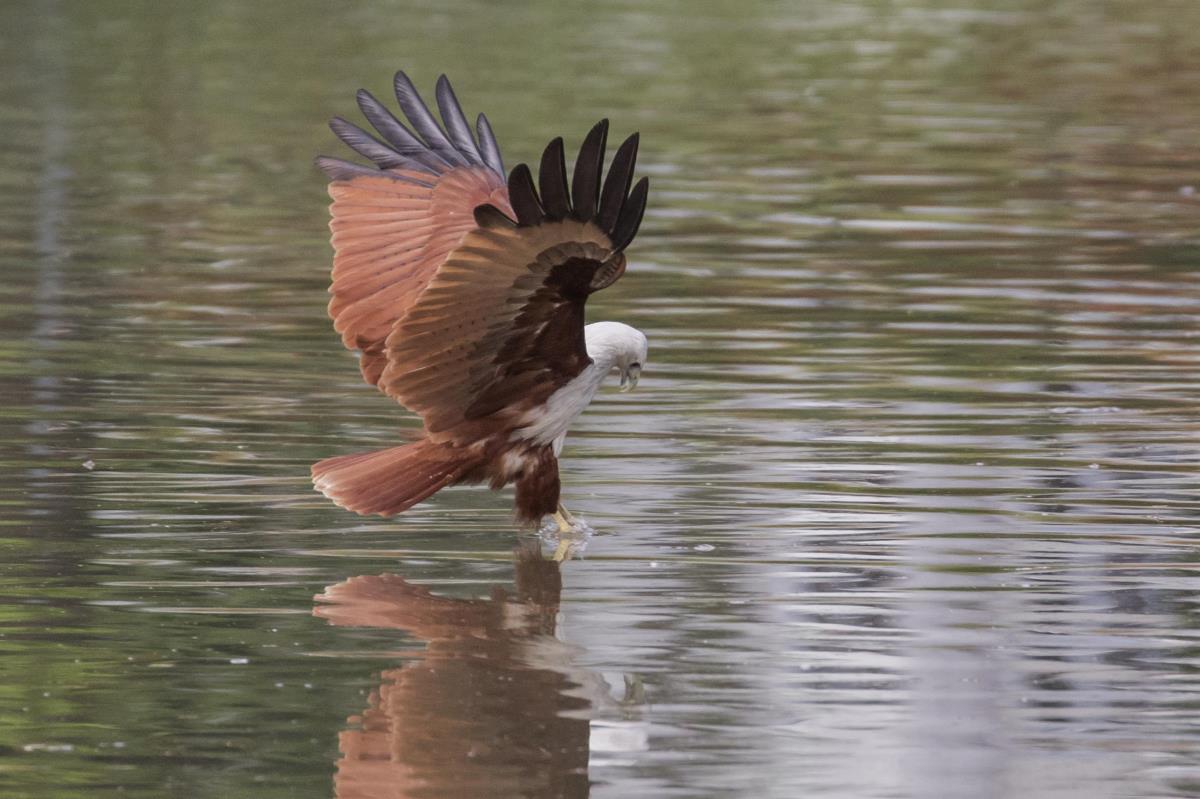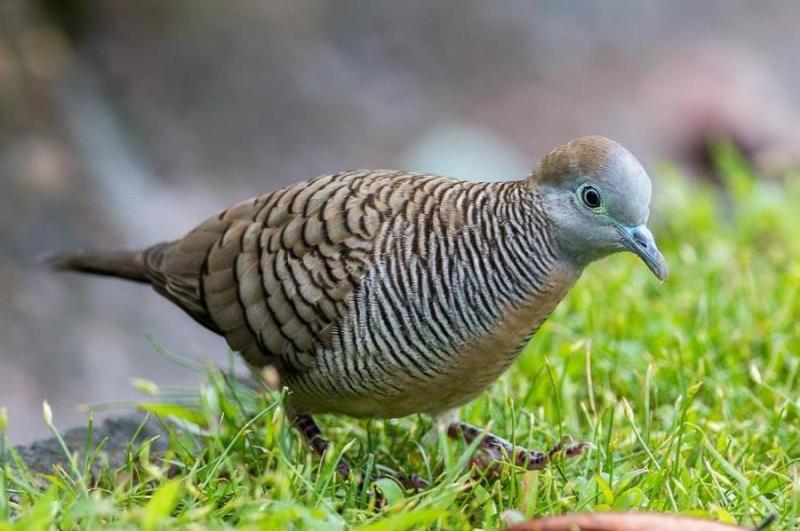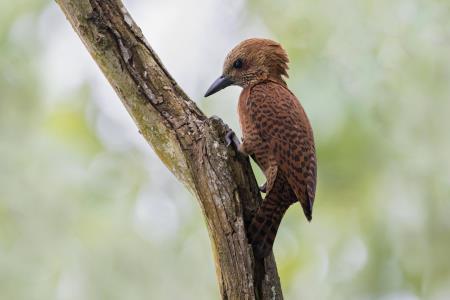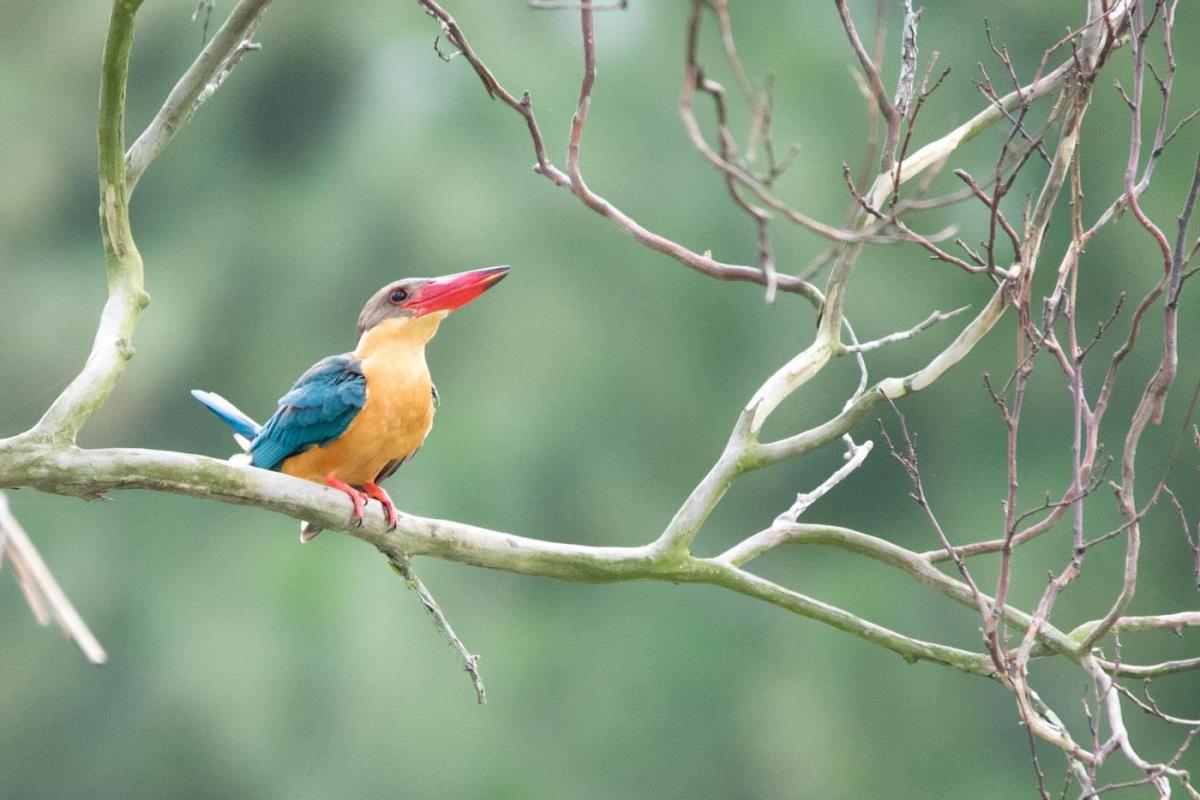Raptors of Jurong Lake Gardens
Also known as birds of prey, this group of birds comprises birds like falcons, eagles, buzzards, kites and owls. They have keen eyesight and can spot prey from afar, and sharp talons that function as lethal weapons. They can also tear flesh easily with their curved beaks.
Brahminy Kite
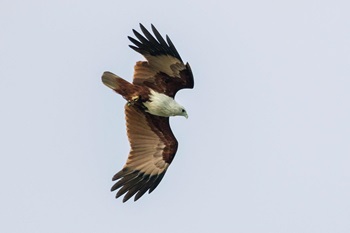 Photo credit: Loke Peng Fai Photo credit: Loke Peng Fai |
| Scientific name: | Haliastur indus |
| Common name: | Brahminy Kite |
| Family: | Accipitridae |
 44–52 cm 44–52 cm |

This common, medium-sized raptor is often known as the “Singapore bald eagle”. It is easily identified by the chestnut brown body and white head and breast of the adult. Compared to eagles, kites weigh less, as well as have smaller heads and narrower wings.

Diet and Behaviour
They are primarily scavengers but also prey on a variety of small animals. They are often seen soaring in the air and occasionally diving for food.
Where is it found?
The Brahminy Kite is commonly found in our mangroves, forests, parks and urban areas. It nests in trees in coastal areas. It is widespread in the skies of the Indian subcontinent, Southeast Asia and even Australia.
Brahminy Kites have been known to perch on the Lone Tree in the Grasslands of Jurong Lake Gardens.
Did you know?
The Malaysian island Langkawi, which means reddish brown eagle, was named after this kite.
White-bellied Sea Eagle
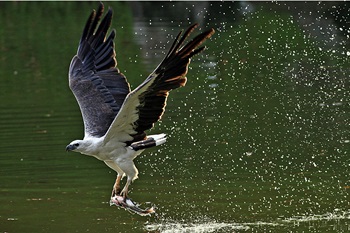 Photo credit: Ong Chwee Sia Photo credit: Ong Chwee Sia |
| Scientific name: | Haliaeetus leucogaster |
| Common name: | White-bellied Sea Eagle |
| Family: | Accipitridae |
 90 cm 90 cm |

They are Singapore’s largest resident raptor with an impressive wingspan. These majestic creatures are common and hard to miss while in the air, sporting a wedge-shaped tail with white head and underparts and dark grey upperwings.

Diet and Behaviour
It primarily feeds on fish and sea snakes, which are snatched from the water’s surface with the aid of its large talons. They form monogamous pairs that remain together until one bird dies, after which the remaining bird seeks a new mate. They often perch high in a tree or soar over waterways such as Jurong Lake alone or in pairs.
Where is it found?
You can spot the White-bellied Sea Eagle soaring in coastal areas and over large water bodies like reservoirs. It nests on tall trees such as the Casuarina as well as man-made structures like transmission towers. It has a wide geographic distribution from India and Sri Lanka through Southeast Asia to Australia.
Did you know?
It was featured on the old Singapore $10,000 bird series banknote.
Grey-headed Fish Eagle
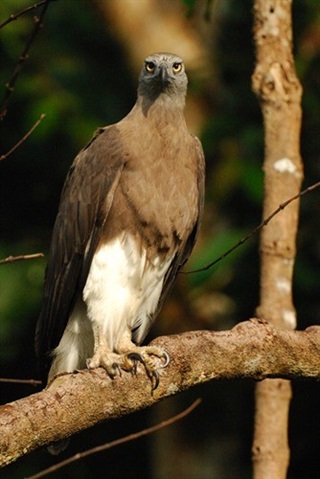 Photo credit: Lin Yangchen, NParks Flora&FaunaWeb Photo credit: Lin Yangchen, NParks Flora&FaunaWeb |
| Scientific name: | Haliaeetus ichthyaetus |
| Common name: | Grey-headed Fish Eagle |
| Family: | Accipitridae |
 61–75 cm 61–75 cm |

These rarely encountered eagles are medium-sized, robust and are generally greyish brown with a pale grey head and white tail.

Diet and Behaviour
It primarily eats fish, but also consumes waterbirds and is known to scavenge occasionally. It spends most of their time perched upright on bare branches overlooking water bodies in search of prey.
Where is it found?
It has a wide distribution covering India and Southeast Asia but is generally uncommon. It breeds along the wooded banks of large water bodies and is widespread across Singapore. It has been known to frequent a patch of Casuarina trees opposite Japanese Garden.

This species is classified as nationally threatened, but its population has increased in recent years.
Crested Serpent Eagle
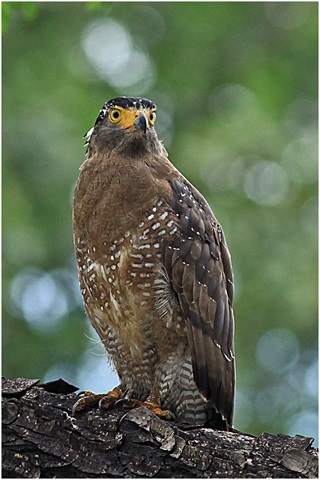 Photo credit: Ong Chwee Sia Photo credit: Ong Chwee Sia |
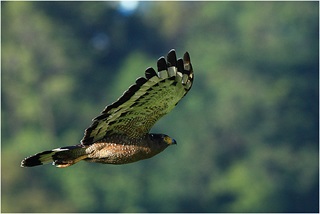 Photo credit: Ong Chwee Sia Photo credit: Ong Chwee Sia |
| Scientific name: | Spilornis cheela |
| Common name: | Crested Serpent Eagle |
| Family: | Accipitridae |
 56–74 cm 56–74 cm |

The Crested Serpent Eagle has a generally dark brown plumage with a black-and-white crown and yellow beak. Its breast and belly have white barrings and there is a prominent central white band across its tail. In flight, a broad white band on its dark trailing wing feathers is visible from below.

Diet and Behaviour
As its name suggests, it primarily feeds on snakes and is often observed soaring over forested areas in search of prey.
Where are they found?
This species is nationally threatened and is occasionally seen soaring over forested areas or in well-wooded parks. Some of the Crested Serpent Eagles observed in Singapore are migratory and spend the winter months in our green spaces.
Spotted Wood Owl
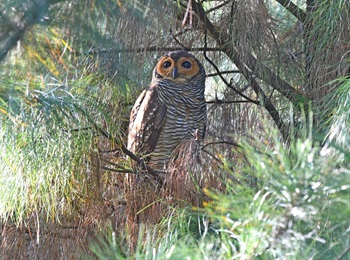 Photo credit: Tan Yip Cheong Photo credit: Tan Yip Cheong |
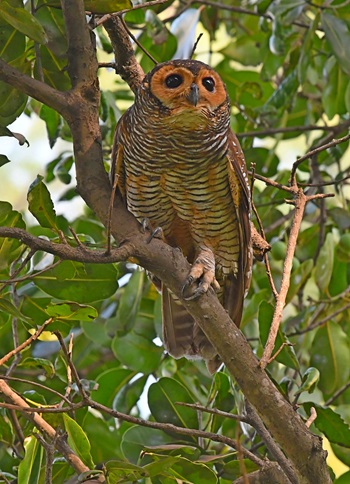 Photo credit: Tan Yip Cheong Photo credit: Tan Yip Cheong |
| Scientific name: | Strix seloputo |
| Common name: | Spotted Wood Owl |
| Family: | Strigidae |
 48 cm 48 cm |

One of the largest owl species in Singapore, you can identify it by its large, earless head and the black bars on its body. It rests on tree branches during the day.

Diet and Behaviour
It hunts small animals like rats, small birds and large insects at night.
Where is it found?
It is usually seen in pairs and is widely distributed across Singapore in a variety of habitats from forests to urban parks. Outside of Singapore, it can also be found across mainland Southeast Asia and the islands of Java and Palawan.
Did you know?
Like other owls, it regurgitates parts of its prey that it cannot swallow, such as skulls and bones, as pellets!

This is a nationally threatened species. However, its population has increased in recent years.
Buffy Fish Owl
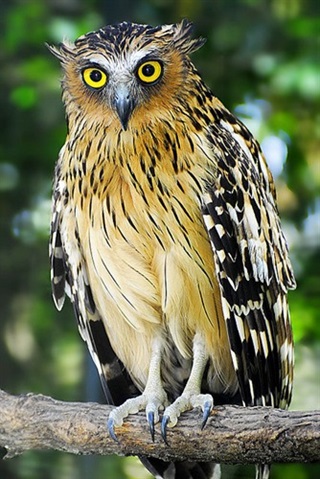 Photo credit: Cai Yixiong, NParks Flora&FaunaWeb Photo credit: Cai Yixiong, NParks Flora&FaunaWeb |
| Scientific name: | Ketupa ketupu |
| Common name: | Buffy Fish Owl |
| Family: | Strigidae |
 45.5–47 cm 45.5–47 cm |

The Buffy Fish Owl can be identified from its brown ear tufts, large yellow eyes and black-streaks on its brown underparts.

Diet and Behaviour
At night, the Buffy Fish Owl hunts for prey around water bodies. It mainly feeds on aquatic organisms like frogs and fishes. It usually lays a single egg in epiphytes such as the Bird’s Nest Fern or in tree holes. During the day, it prefers to roost singly in tall dense trees.
Where is it found?
It can be found in wooded areas close to water, including parks, forests and mangroves. Elsewhere, it is found in many other Southeast Asian countries.

This is a nationally threatened species. However, its population has increased in recent years.
Banner: Brahminy Kite. Photo credit: Loke Peng Fai


